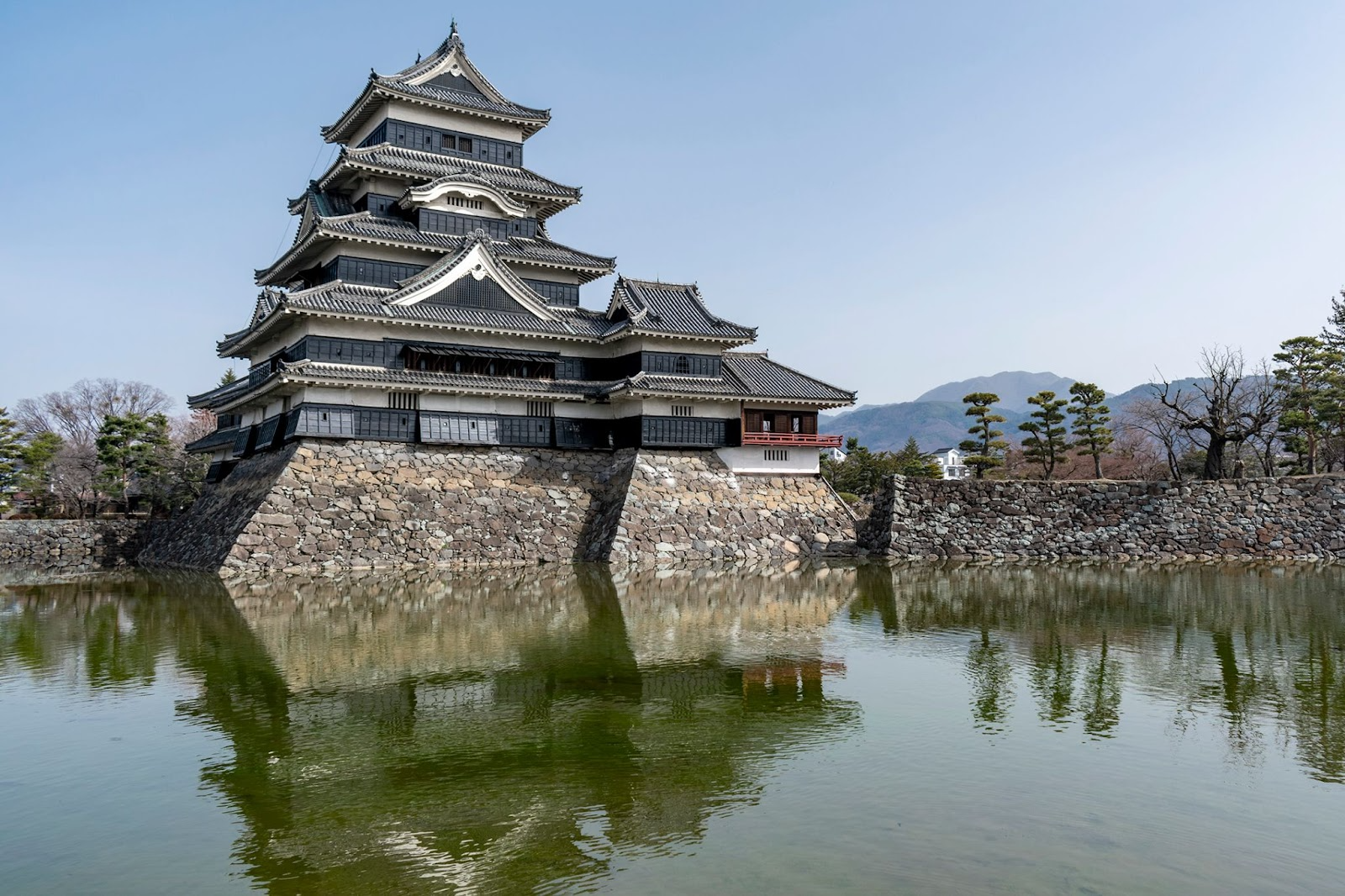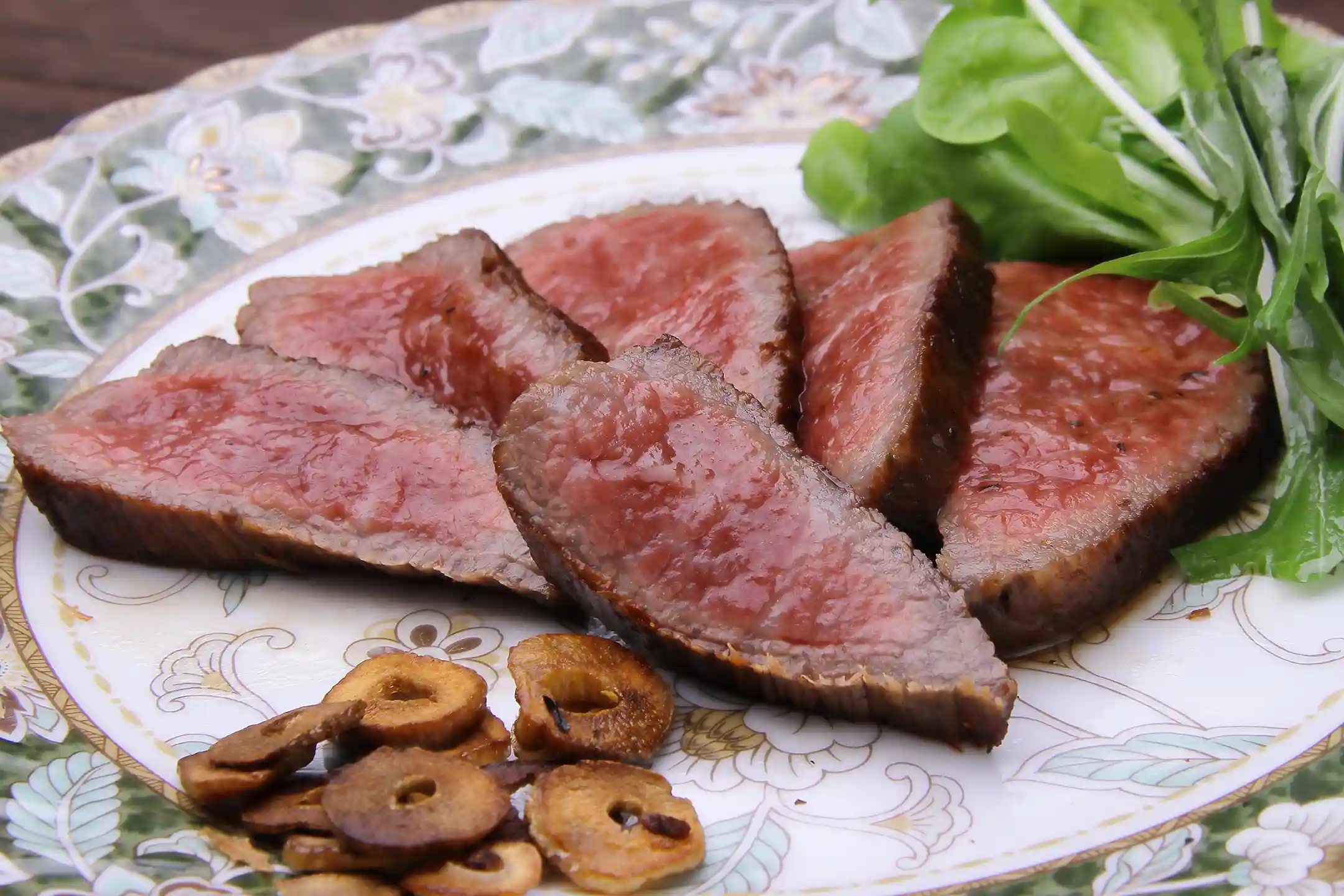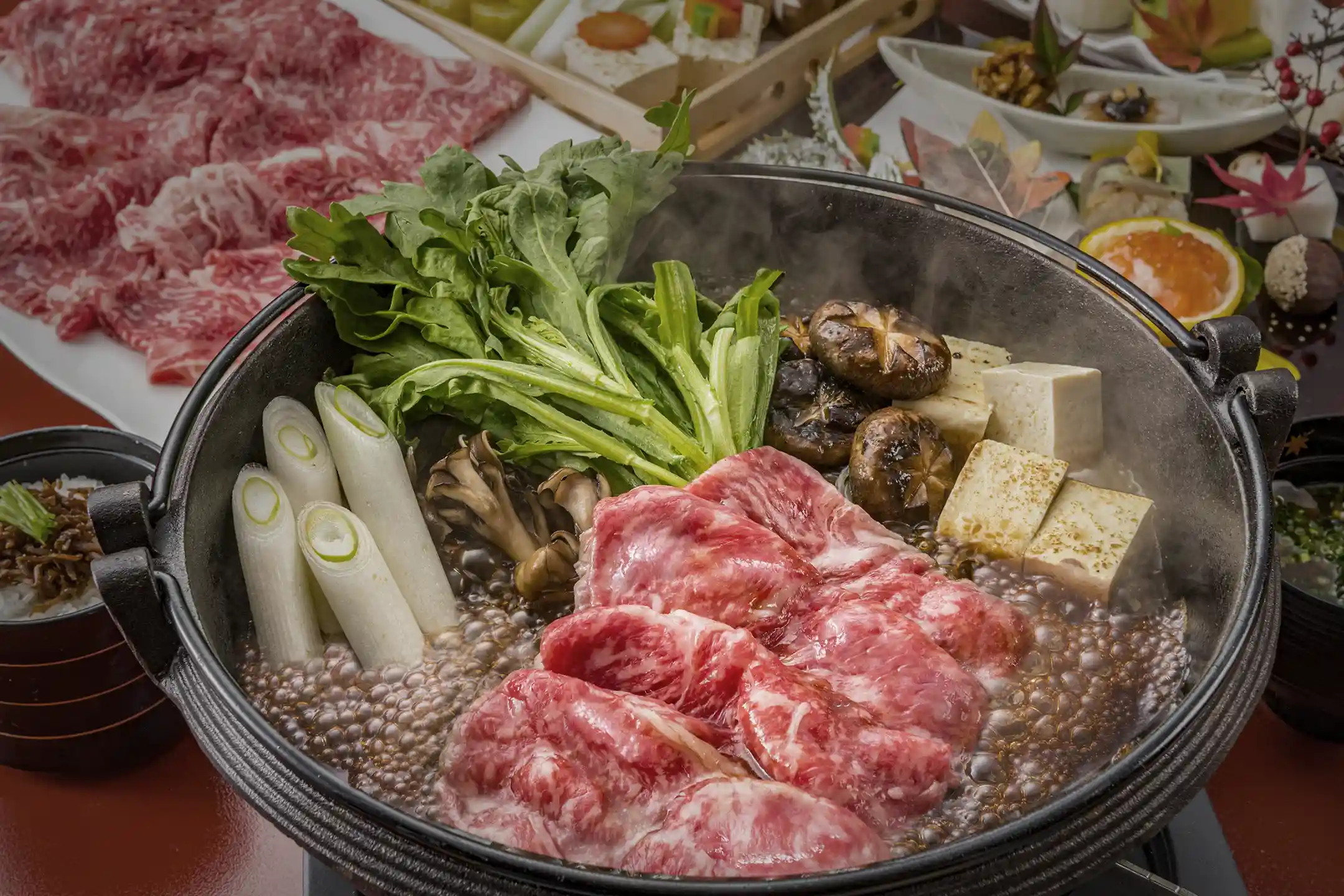Matsumoto is a city steeped in history and culture. Here, staying at an inn is more than rest—it becomes “time to quietly converse with the local aesthetic.”
Just as time is layered into Europe’s stone-built towns, Matsumoto’s castle town has its own deep strata of history. Around the National Treasure that is Matsumoto Castle, you encounter a living aesthetic of artisanal craft and coexistence with nature. This comes from a distinctly Japanese sensibility that values “relationships” and “flow” over the individual—an ethos that permeates the details of everyday life and architecture.
In the 20th century, the Mingei (folk craft) movement spread throughout Japan and left a major imprint on Matsumoto. Finding beauty in everyday items made by unnamed artisans, this movement still quietly breathes through local life and the design of lodging spaces.
In this article, you’ll discover—from diverse angles—the appeal of stays in Matsumoto filled with knowledge and beauty—useful if you’re searching for “matsumoto accommodation”—the kind of experiences you’ll especially appreciate as a culturally curious traveler.
What “Staying” Means in Matsumoto Accommodation — Where Culture and Aesthetics Intersect
A stay in Matsumoto isn’t just a stopover; it’s a chance to engage with the region’s history and aesthetic. In the castle town centered on the National Treasure Matsumoto Castle, the layered flow of time and refined sensibilities are etched into the streetscape. The spirit of the Mingei movement, led by Yanagi Sōetsu, deeply influenced Matsumoto craft dealer Maruyama Tarō.
Drawing on the everyday objects and crafts he collected, the Matsumoto Folkcraft Museum was established in 1962, and a culture that honors the beauty found in daily life took root in the city (*1). Today, the museum’s perspective on the “beauty of utility” continues to inform local design and how accommodations express place (*1).
This “beauty of utility” and the traditions of the castle town are steadily passed down in local accommodations. At Hotel Kagetsu, a venerable inn founded in 1887, furniture by Ikeda Sanshirō—the founder of Matsumoto Mingei Furniture—is placed throughout, creating spaces where you can comfortably experience “beauty in everyday life” (*2).
Immerse yourself in these interiors and you touch the atmosphere of historic architecture and the handiwork of artisans—receiving the region’s aesthetic with your whole body. Simply staying becomes a quiet, enriching dialogue with the deeper culture of Matsumoto.
How to Choose Matsumoto Accommodation to Savor Culture and Artistic Sensibility
Matsumoto offers lodgings where you can feel the area’s distinctive culture and artistry. Below are pointers on how to choose lodging that fits your travel purpose.
Cultural Inns around the Matsumoto Folkcraft Museum
If you want to connect with the Mingei spirit, the Utsukushigahara Onsen area is ideal. At Ryokan Sugimoto, the quiet lobby is filled with jazz, vacuum-tube amplifiers, and carefully selected speakers, letting you experience an aesthetic through sound.
The proprietor is well-versed in local sake and wine, so you can enjoy a stay that stimulates your senses alongside Shinshu flavors (*1). Ask for pairing suggestions—the owner’s deep knowledge of regional labels makes tastings a highlight.

At Matsumoto Hotel Kagetsu in the city center, Mingei furniture appears throughout the property, and in the lobby you can browse the magazine Mingei and photographs from the hotel’s founding (*2). By prioritizing the “beauty of utility” over decoration, these spaces reveal a value system different from many Western hotels that tend to emphasize efficiency and function.

Stays in Renovated Samurai Residences and Historic Townhouses
If you want to face Matsumoto’s history head-on, consider inns converted from samurai residences or machiya townhouses. Near Matsumoto Castle, Mitsubikiya is a four-room inn created by refurbishing an earthen storehouse built in 1855, retaining the atmosphere of the Taishō–Shōwa eras (*3).
With beams and pillars preserved and modern comforts added, the space becomes a meeting point of past and present.
You’ll notice a distinctly Japanese stance of “making use of the old”: the narrow frontage and deep interiors typical of the Edo period, and reclaimed timbers from demolition reused in the interior design (*4). Touch the plaster walls or traces of the old hearth, and it feels like traveling through time.
Art Hotels and Lodgings with Galleries
If contemporary artistry resonates with you, art- and design-themed inns are also an option. Matsumoto cultivates arts and culture across the community with efforts such as the “Downtown Art Project” and an architecture and arts festival (*6).
A standout is Matsumoto Jūjō in Asama Onsen. Reviving a long-established ryokan, it houses “Matsumoto Honbako,” with about 10,000 volumes—a space where lodging and reading converge (*5). Contemporary art melds into Japanese architecture, offering an experience that combines Japanese quietude and intellect in a way that differs from Western design hotels.
Matsumoto Accommodation with Intellectual Experiences
For travelers who want to understand traditional culture more deeply, accommodations that provide intellectual programs during your stay are ideal. You can enjoy learning and discoveries you won’t get from sightseeing alone—without leaving your inn.
Stays with Guided History Walks
To engage with Matsumoto’s history, choose inns offering tours led by knowledgeable staff. At Hotel Buena Vista in the city center, a “curator-hotelier” with museum curator credentials runs walking tours of the castle town for overnight guests (*1).
As you visit sites such as Matsumoto Castle, you’ll hear the stories and atmosphere behind them, gaining perspectives you won’t find in guidebooks.

Stays with Hands-On Cultural Workshops
If you prefer hands-on cultural connection, look for inns that offer workshops on local traditions. Near Matsumoto Castle, “Tabi no Yado Takagi” is registered as a facility for study trips and may provide plans such as soba-making or crafting Matsumoto temari balls (*2).
Experiences like these are precious because “making” brings you closer to culture than simply watching.
Some lodgings will also arrange individual activities—indigo dyeing workshops or visits to long-established miso breweries (*3)—so what you learn on your trip remains with you as a memorable “skill.”
Stays with Evening Reading Circles and Cultural Talks
To enrich your evenings, consider inns with cultural lectures and opportunities for exchange. At Hoshino Resorts KAI Matsumoto in Asama Onsen, a nightly program called “Fermentation Hour” introduces Shinshu wines and miso-marinated delicacies, while staff speak about fermentation culture (*4). Conversations among guests naturally arise, turning the space into a forum for shared knowledge.
Large hotels may also host night libraries in their lounges, stargazing sessions, or mini-performances of local arts. In settings like these, travel shifts from a fleeting event to something tied to your ongoing intellectual growth.
Design-Forward Lodgings in Harmony with Lifestyle
Design- and Interior-Conscious Stays
Matsumoto offers stays where tradition and modernity come together in design. One emblem is Matsumoto Hotel Kagetsu, a classic hotel founded in 1887. The “spirit of Mingei” is alive here, with Matsumoto Mingei furniture and folk crafts from around the world placed throughout (*1).
Mingei is a philosophy proposed in the Taishō era by Yanagi Sōetsu and others: finding beauty in everyday goods made by unknown artisans—a value set distinct from Western ideas of authorship or brand (*1). In the lobby and guest rooms, Mingei furniture that has been handed down for over 80 years creates calming spaces suffused with handcrafted warmth and understated beauty (*2).
Stays with Considered Amenities and Thoughtful Hospitality
Beyond visual beauty, some inns emphasize hospitality that appeals to all the senses. Hoshino Resorts KAI Matsumoto blends the traditions of Asama Onsen with a modern lifestyle, offering refined care in every detail. Eight types of bathing in thirteen variations, live performances in a high-ceilinged lobby, and time spent with Shinshu wines engage your senses fully (*3).
The pairing of Shinshu wines with a multi-course kaiseki dinner (*4), and guest rooms featuring traditional crafts—suminagashi (ink-marbled) fusuma panels and shoji screens with fine joinery (*5)—let you savor local beauty through sight and touch. A stay where Japanese attentiveness and contemporary comfort are in exquisite balance is, truly, an “experience of aesthetics.”

Stays with Nearby Cafés and Bookshops
If you want to enjoy unhurried, culture-rich time, Matsumoto Honbako is a great fit. This book-focused hotel renovates a ryokan founded in the Edo period, proposing a stay themed around “knowledge and stillness” (*6).
Preserving design elements of the traditional “Koyanagi” architecture while reconstructing them for the present, the space elegantly layers past and present (*6). The site includes a bookstore with over 10,000 volumes, a bakery, and a general store, and unique cafés line the streets just outside (*6).
Checking in at the café “Oyaki and Coffee” is a charming touch (*7). Time surrounded by books and coffee feels like staying in a museum or library. While it echoes Western boutique-hotel style, the distinctive Japanese quiet and intelligence stand out.
Sustainability-Focused Matsumoto Accommodation
Accommodations with Environmentally Conscious Practices
For travelers committed to sustainable journeys, Matsumoto is a noteworthy destination. At Matsumoto Jūjō, the team behind Matsumoto Honbako, reducing single-use amenities is a priority, and guests are encouraged to bring their own toothbrushes and razors (*1). They also select furniture made from environmentally conscious wood and pursue circular design.
Citywide, the “Let’s Eat It All! 30–10 Campaign” brings the administration and businesses together to reduce food waste (*2). This region-wide stance lets travelers reaffirm environmental awareness through their stay and feel how travel connects to a more sustainable future.
EV-Friendly Accommodations
For visitors who support lower-impact transportation, the availability of EV charging at inns is a major draw. Matsumoto Jūjō has three standard charging stations that can accommodate EV travelers (*3). Hoshino Resorts KAI Matsumoto is said to have EV charging facilities available to overnight guests 24 hours a day (*3). Please confirm details such as fees and use conditions directly with each property.
Across the city, more inns now have parking compatible with EVs and PHVs (*2), making it easier to combine environmental consideration with comfortable mobility. An EV drive with the Northern Alps as your backdrop—paired seamlessly with charging and lodging—represents a travel style that respects nature and is increasingly appreciated by guests from Japan and abroad.
Architecture and Settings in Harmony with Nature
Lodgings where architecture harmonizes with the natural environment are also compelling for those pursuing sustainable travel. Satoyama villa DEN is a 120-year-old farmhouse renovated into a whole-house rental that blends into the satoyama landscape (*1). With views of the Northern Alps and nearby organic gardens and rice paddies, it also becomes a place to experience Japan’s traditional agrarian lifestyle.
Time spent engaging with nature—gardening, barbecuing, and more—offers something urban life rarely provides. Stays like this help you rediscover the relationship between land and people and feel firsthand that culture and nature are not separate.
A Journey to Gain “Cultural Literacy” Through Your Stay in Matsumoto

Stays Linked with Literature and Art
Matsumoto is also known as a stage for literature and art—perfect for a “reading trip” or “art pilgrimage.” With the city-produced local novel The Matsumoto Case Files (Tadaima Matsumoto no Jikenbo) in hand at your inn, the landscapes and shops that appear in the story unfold in the real city, pleasantly blurring the line between fiction and reality (*1).
It’s also the hometown of world-renowned contemporary artist Yayoi Kusama, and the city museum displays the large-scale sculpture Illusory Flowers (*2). Encounter the work, then carry its afterglow back to your inn for a quiet evening—an experience that resonates deeply.
Learning Japanese Aesthetics Through Architecture
Matsumoto retains many buildings from the Meiji and Taishō eras, turning a simple walk into a lesson in aesthetics. The Former Kaichi School building is a leading example of “pseudo-Western” architecture; its blend of Japanese and Western motifs shows Japan’s trial-and-error during the age of civilization and enlightenment. The façade—dragon carvings alongside an octagonal tower—symbolizes a push and pull between admiration for Western culture and pride in one’s own (*3).
The Former Matsumoto High School (now Agatanomori Cultural Center), from the Taishō era, is also preserved, maintaining its mansard roof and the warmth of timber, and cherished by local residents. From such buildings, you can learn how modern Japan sought harmony between function and beauty.

A Stay That Leaves You with “Knowledge”
A trip to Matsumoto sends you home not just with “memories,” but with “knowledge.” The cultural understanding you gain through literature, art, and architecture holds meaning beyond ordinary tourism. The idea that hands-on experiences deepen learning is attracting attention in educational travel and high-end experiential tourism (*4). Stays in Matsumoto resonate strongly with this intellectual approach.
And the insights you gain won’t end when the trip does—they’ll return in unexpected moments back home, adding new colors to your life.
Choosing Matsumoto Accommodation by Type
Matsumoto offers a rich variety of accommodations, from high-end ryokan to distinctive guesthouses. You can choose “hidden retreats,” “long-admired hot spring inns,” and classic hotels outfitted with Matsumoto Mingei furniture—places where “staying in Matsumoto” becomes a purpose of the trip itself (*1). Here are options you can select by travel style.
If You Want a Stay with Hot Springs
If you want healing time while entering Japan’s onsen culture, the hot spring inns around Matsumoto are perfect. Historic onsen areas such as Asama, Utsukushigahara, Tobira, and Shirahone offer lodgings that combine scenery with high-quality waters.
For example, Myojinkan in Tobira Onsen is a luxury inn wrapped in the forests of the Northern Alps. You can enjoy free-flowing spring baths and fine cuisine with the changing seasons. In Asama Onsen, Yuyado Izumiya Zenbei and Hotel Tamanoyu, and in Utsukushigahara Onsen, Ryokan Sugimoto and Shiraito-no-Yu Takino-Yu, are beloved for preserving tradition while ensuring modern comfort.
Hoshino Resorts KAI Matsumoto, in particular, blends Japanese design with local culture and is well-received among Western travelers. With Shinshu books and crafts in the rooms, the experience lets you savor culture alongside hot springs—depth beyond simple relaxation.
For Easy Access Near the Station
For travelers relying on rail or visiting on business, accommodations around Matsumoto Station are convenient. Hotel Buena Vista is a landmark property—seven minutes on foot from the station with a shuttle bus—and pairs high convenience with views of the Northern Alps.
Chain hotels such as Alpico Plaza Hotel and Richmond Hotel Matsumoto provide reliable service and comfort. Distinctive options near the station include Iroha Grand Hotel Matsumoto Ekimae, which incorporates Japanese touches, and Onyado Nono Matsumoto, with tatami throughout and hot springs. These are perfect if you want to balance efficiency and comfort when searching for matsumoto accommodation.
Choosing by Budget
Budgeting to match your travel purpose is key. In Matsumoto, distinctive stays are available at every price point.
High-End
Myojinkan in Tobira Onsen and Gosenjaku Hotel nestled in Kamikōchi’s nature offer luxurious stays in the higher price range—perfect for special occasions and commemorative trips.
Mid-Range
There’s excellent value in the mid-range. Matsumoto Hotel Kagetsu, a classic hotel founded in the Meiji era, charms with retro-modern spaces furnished with Mingei pieces. Matsumoto Jūjō (Matsumoto Honbako / Koyanagi) also fits this tier, combining hot springs with a distinctive book-hotel concept.
Low-Cost
Among reasonably priced guesthouses, tabi-shiro—run by a returnee local—is popular. With a lounge offering local tips and shared spaces including a kitchen, it fosters warm exchanges between travelers and residents (*2). (Note: sauna facilities and gelato offerings are not listed on the official site, so please check before use.) Options such as Nawate Guest House and “Matsumototei Ichinōsha,” a renovated farmhouse with a café, keep costs down while delivering memorable experiences.
In places like these, the stay itself becomes a venue for encounters and discoveries. If you choose not only for price but also for the chance to enjoy Matsumoto-style connections and cultural learning, your trip satisfaction will climb.
Summary — The Beauty and Wisdom Sustained in Matsumoto Accommodation

Matsumoto’s accommodations offer experiences where “the stay itself becomes the purpose of the trip.” Surrounded by Mingei furniture, you can feel the beauty of handcraft; in timeworn homes, you can sense the passage of years; in quiet dialogue with art and books, you can satisfy your intellectual curiosity—there are many ways to shape your stay.
What’s more, learning opportunities such as mini-lectures on fermentation or indigo-dyeing workshops, along with environmental initiatives such as EV support and reducing plastics, show how Matsumoto’s inns resonate with contemporary values. This is not about merely preserving tradition; it’s culture continually renewed for the future.
By staying at an inn, you meet a place’s aesthetics and philosophy in depth. For travelers who seek such experiences, Matsumoto’s lodgings are not just somewhere to sleep—they are stages where “knowledge and beauty” intersect. If you’re aiming for an intellectually rich journey, these are stays worth choosing.
Author Bio

Maoko Shibuya
Content Planner & Writer Holding a master’s in Digital Marketing and experience across global markets, Maoko blends international perspective with a deep appreciation for Japan’s cultural heritage. She plans and writes compelling narratives that reveal the country’s beauty and depth, drawing on her passion for travel, local cuisine, and cultural exploration.





/Kazunoko%20Matsumae-zuke%20(Herring%20Roe%20and%20Seafood%20Pickles).webp)